2019 KTM 690 Enduro R Review
Motorcycle Test by Trevor Hedge
The all-new for 2019 KTM 690 Enduro R is a study of how far a manufacturer can progress a model, via smart implementation of technology and high-end components, to successfully redefine the single-cylinder platform.
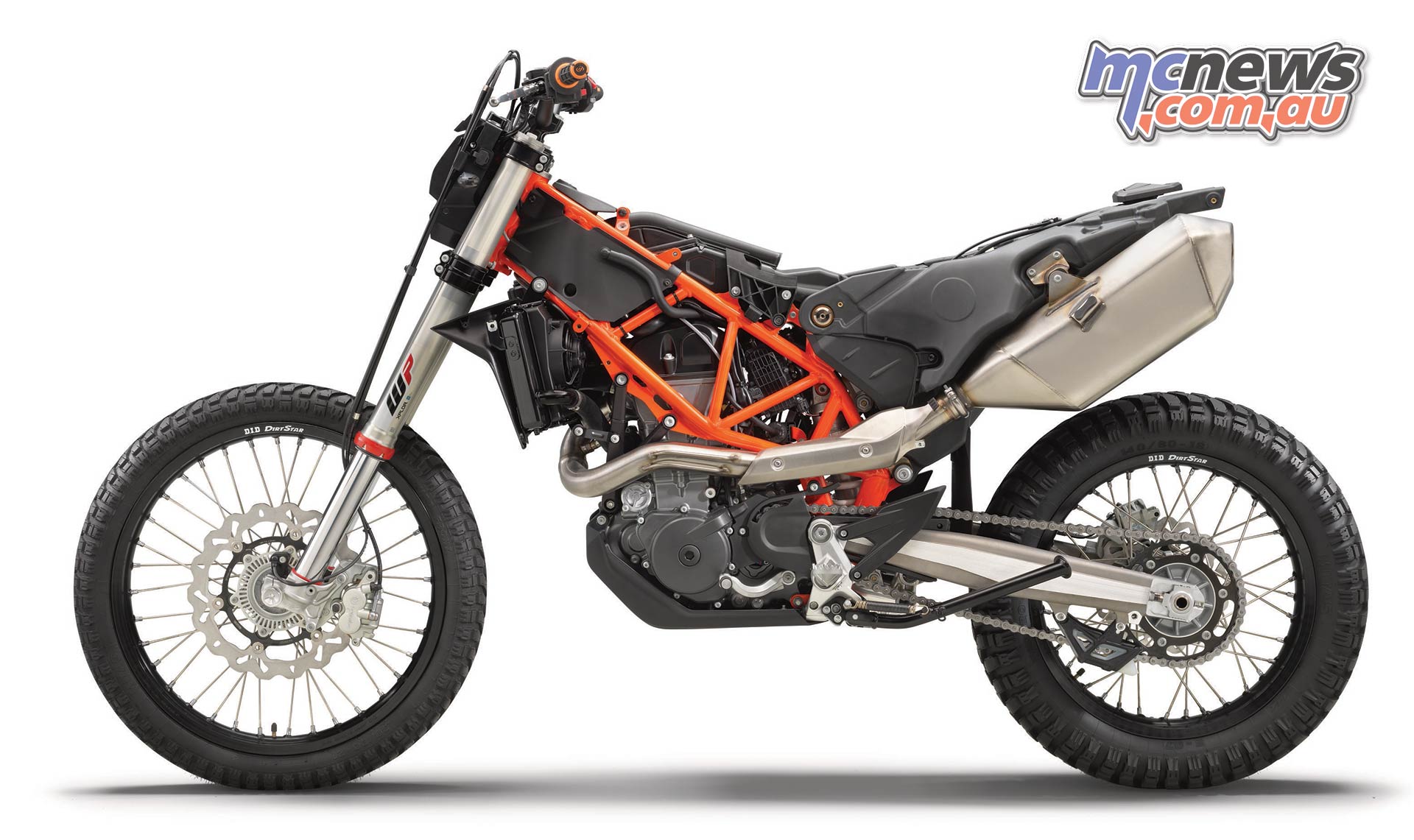
I wasn’t much of a fan of the KTM 690 Enduro I rode almost a decade ago. In standard trim it was pretty breathless and felt, well, a little old hat. A lot of modifications were needed in order to get the old bike to perform, but even then I never found it really inspiring. In fact, I have found all the large capacity modern big-bore singles to be fairly insipid, leaving me distinctly unimpressed and thinking, ‘what if a manufacturer actually had a proper bloody go at applying some of the latest technology to build a big single lunger with smarts’. I have been somewhat frustrated by the lack of progress in this space.
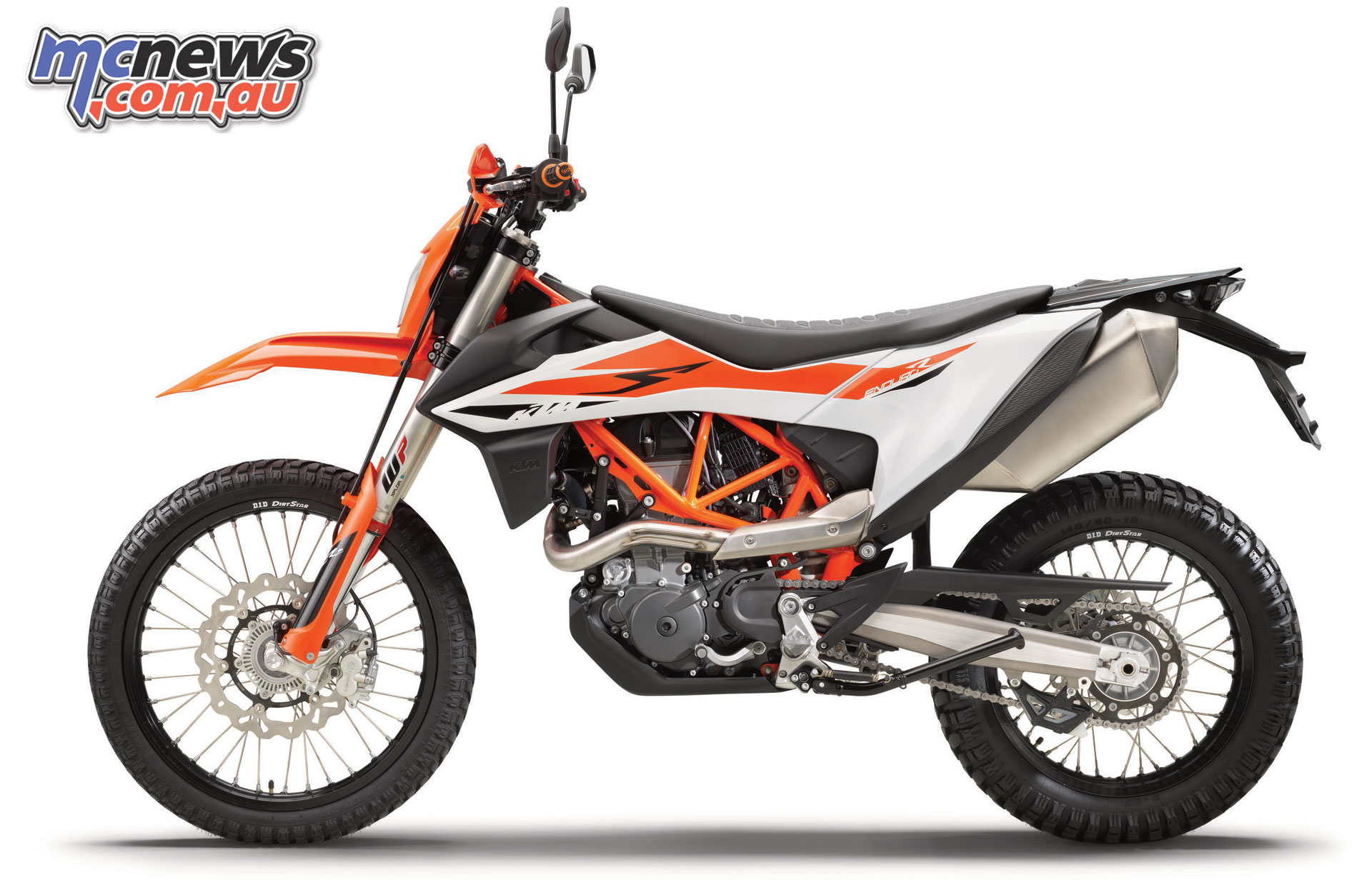
After sampling the all-new for 2019 KTM 690 Enduro R in Portugal this week I feel I really must congratulate KTM for pushing the boundaries. The Austrian manufacturer have thrown absolutely everything at this bike, leaving no stone unturned in the quest to build the ultimate big-bore single.
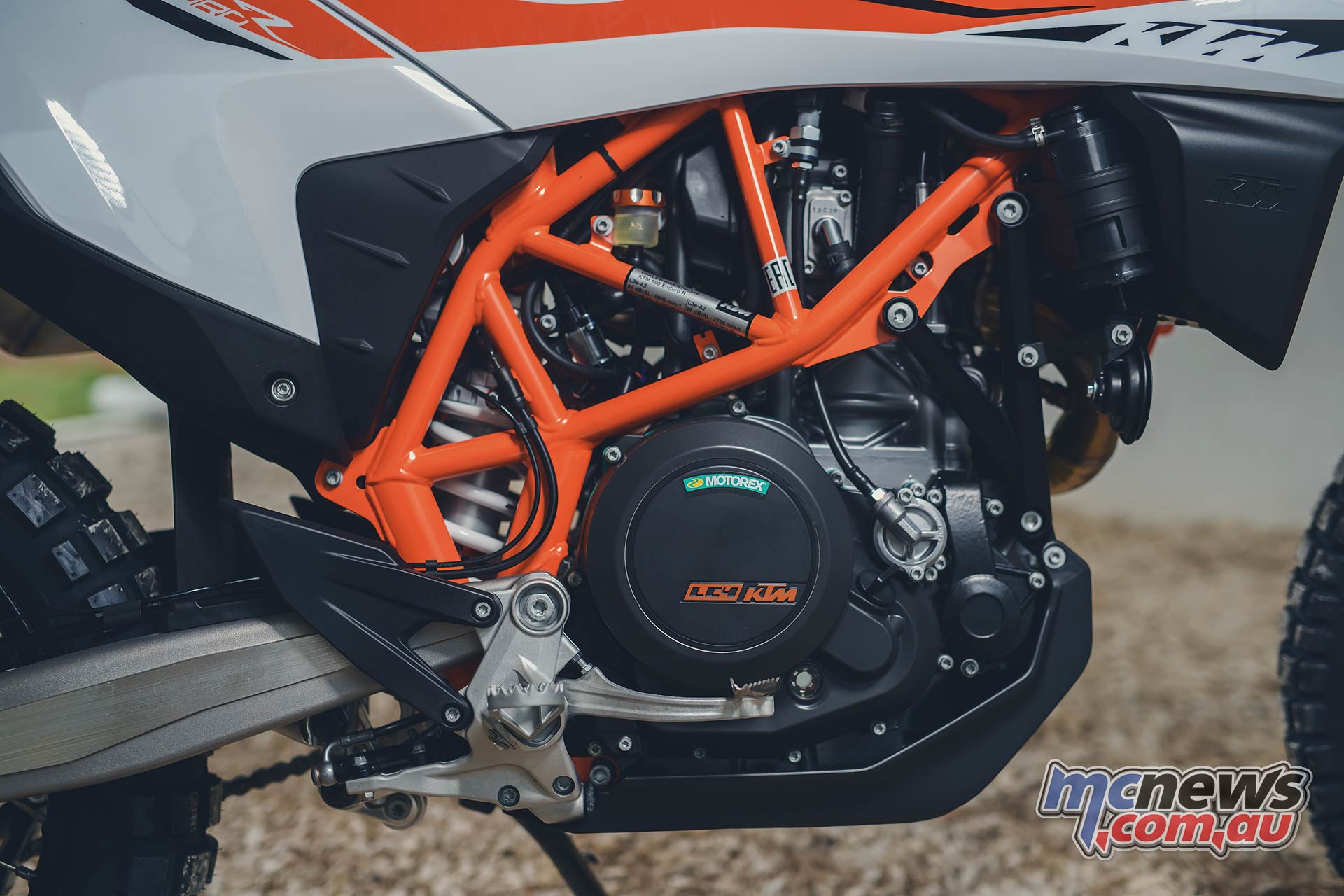
This, as you would expect, comes at a price. Even if it redefines the genre, are people really going to pay $17,595 (Ride Away), for a big chook chaser? KTM certainly have their fingers crossed, but it is only a question that the fickle motorcycle buying public can answer.
That sort of money puts you in Africa Twin and F 750 GS BMW territory. Those machines have a lot more overall touring amenity and creature comforts for the long haul, including plenty of luggage options, but neither bring the level of outright off-road performance to the ride that the KTM boasts as standard. Not that you would really expect them to either, of course.
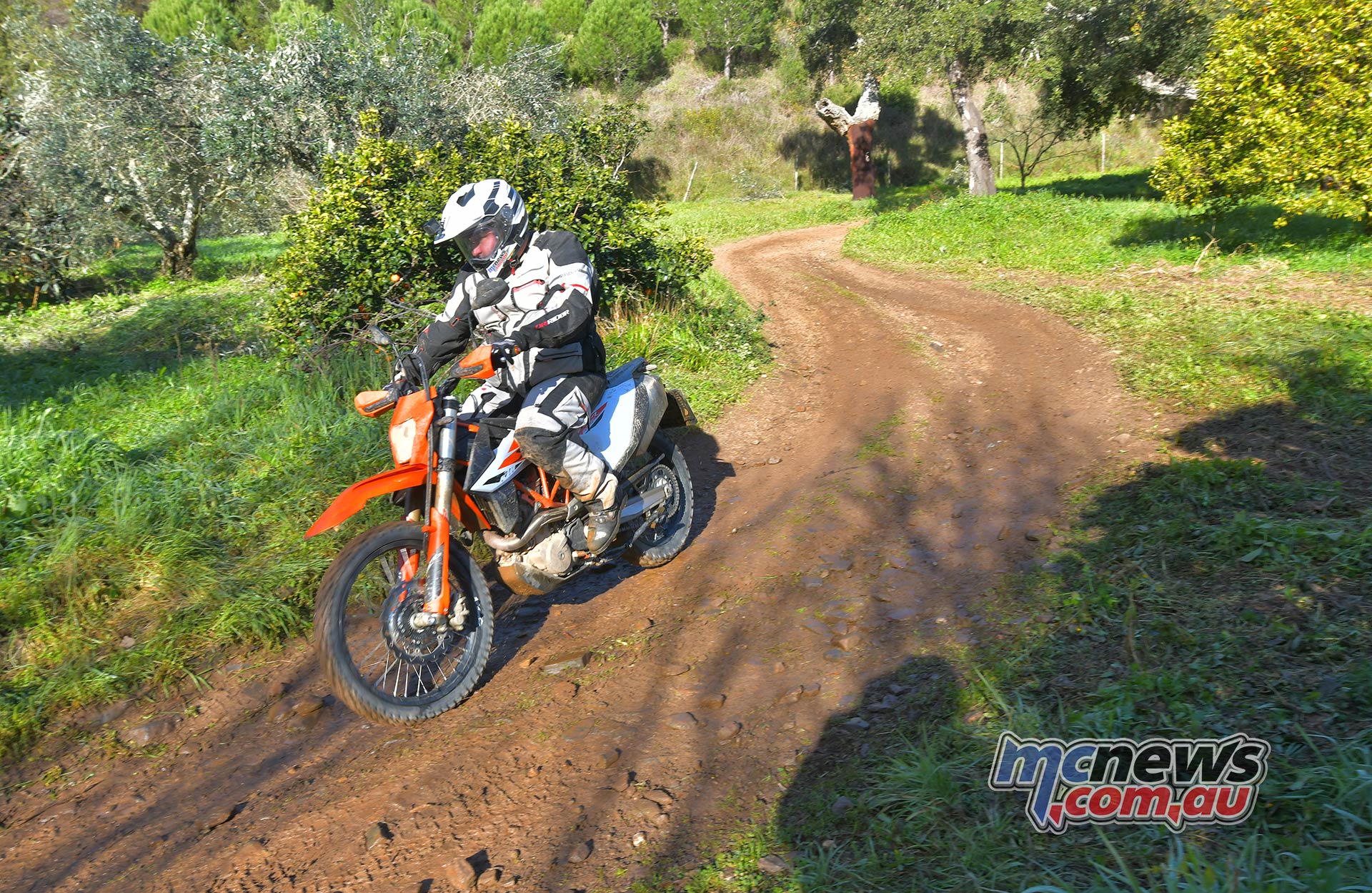
The KTM 690 Enduro R is a very well mannered motorcycle and, thanks to some brilliant ergonomics, it actually might be a real world touring option for many.
Despite the 910 mm tall seat resembling a plank, it did not eat into my somewhat generously sized thighs at any point during my 100km initiation, which suggests that it might prove comfortable enough to equip the machine with some semblance of real touring credentials.
It’s not all about the size of the tool, or is it…?
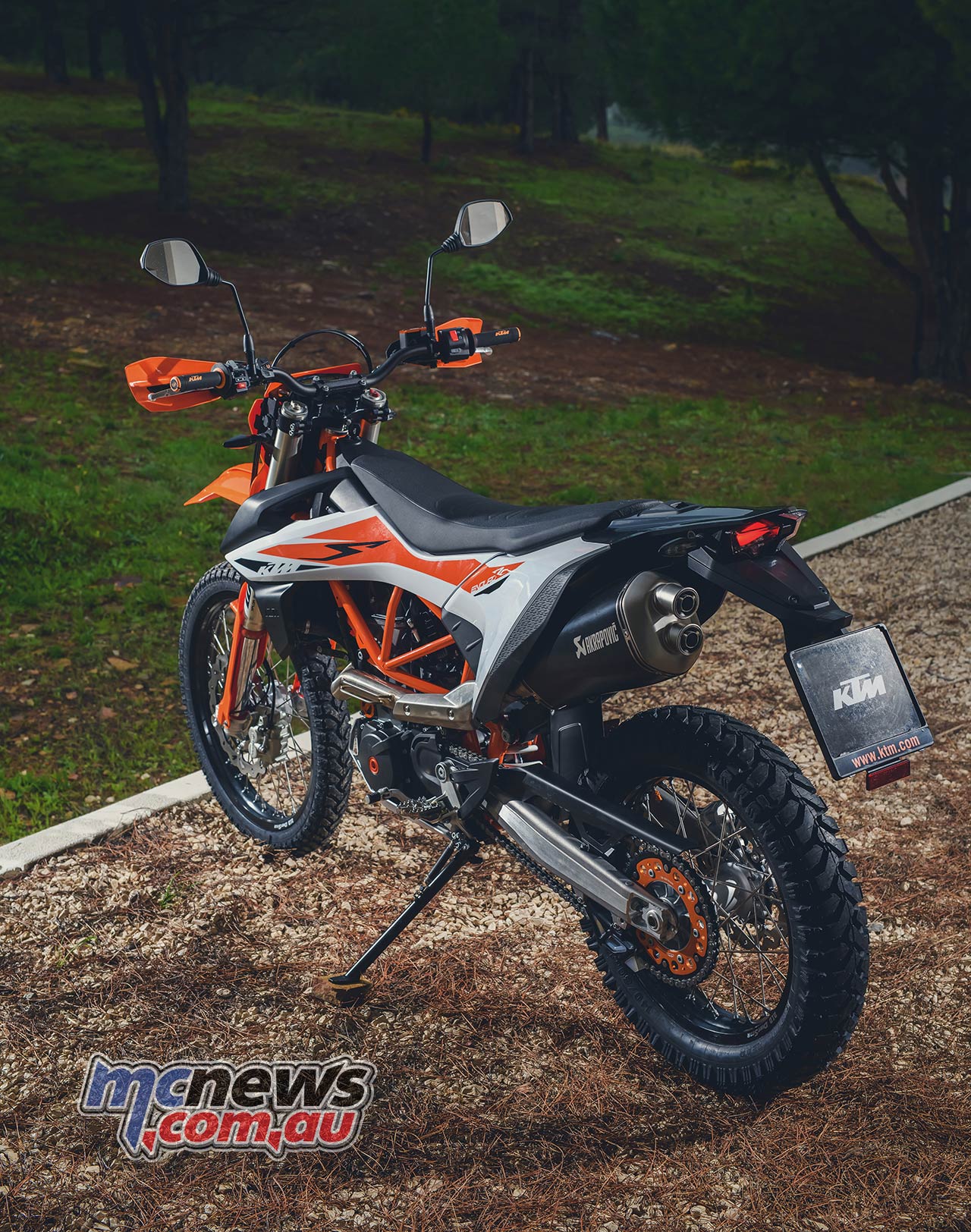
Due to the very slim dimensions of the machine throwing a leg over that tall seat is still an easier process than mounting some large adventure bikes, even those that have perches a couple of inches shorter than the 690 Enduro R. It is light and slim so getting on and off it is a breeze in comparison to many adventure bikes.
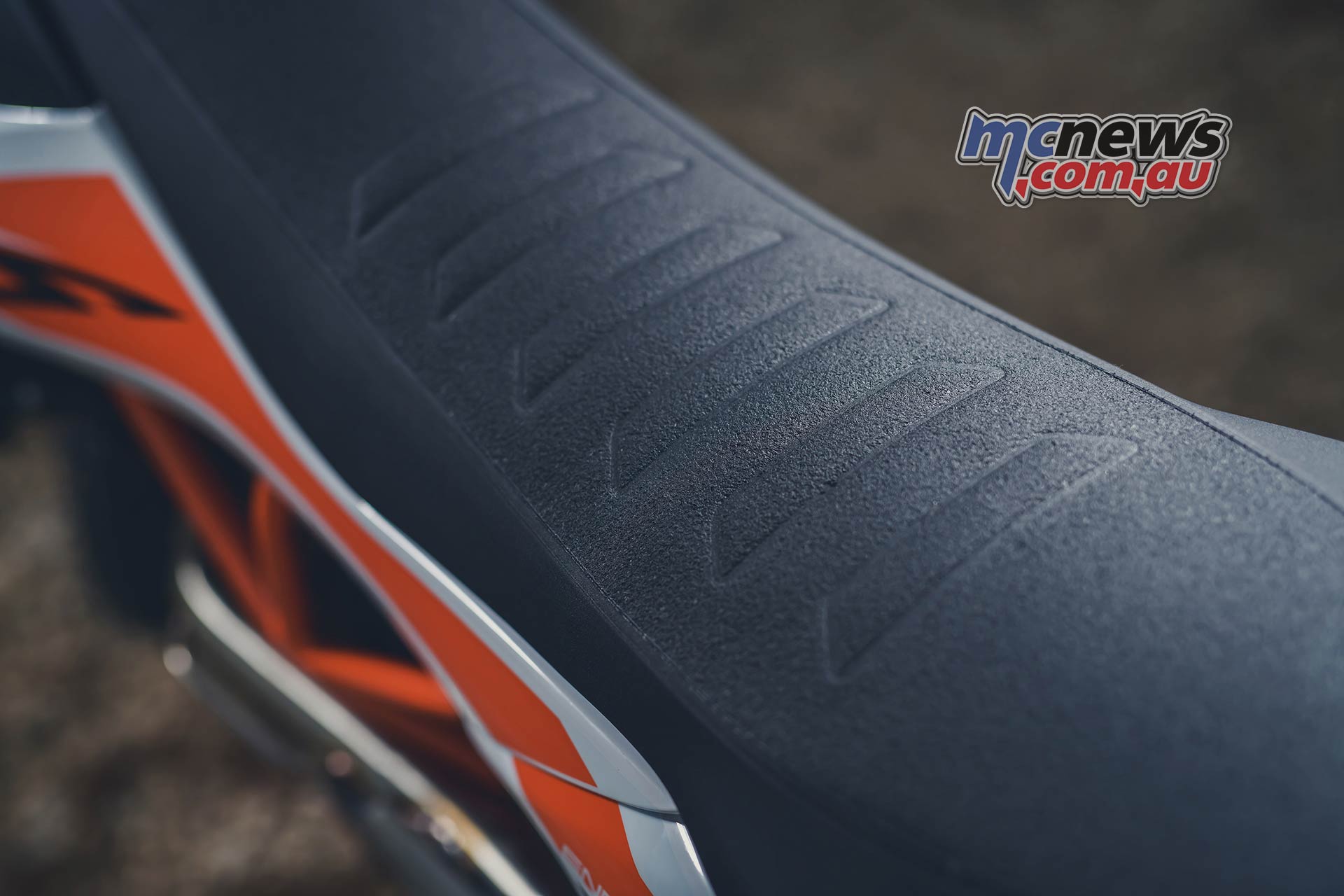
The 690 Enduro R is distinctly minimalist, but I would still say that for the long haul, it would likely prove a more comfortable option than the biggest selling big single in Australia, the venerated DR650. As for performance, well, the current DR650 model was fairly basic when it debuted over 20 years ago, compared to the new KTM today it feels downright archaic. But, the Suzuki is built down to a price, and that price is half that of the KTM…. And before I get the hate mail from the DR650 devotees, I might remind you that I have ridden my own DR650 across Australia and have had my arse punished over more than 100,000 km astride a DR650, and was even silly enough to race one in Natural Terrain Motocross! I have also enjoyed the ownership of a KTM 990 Adventure R, that I still miss…
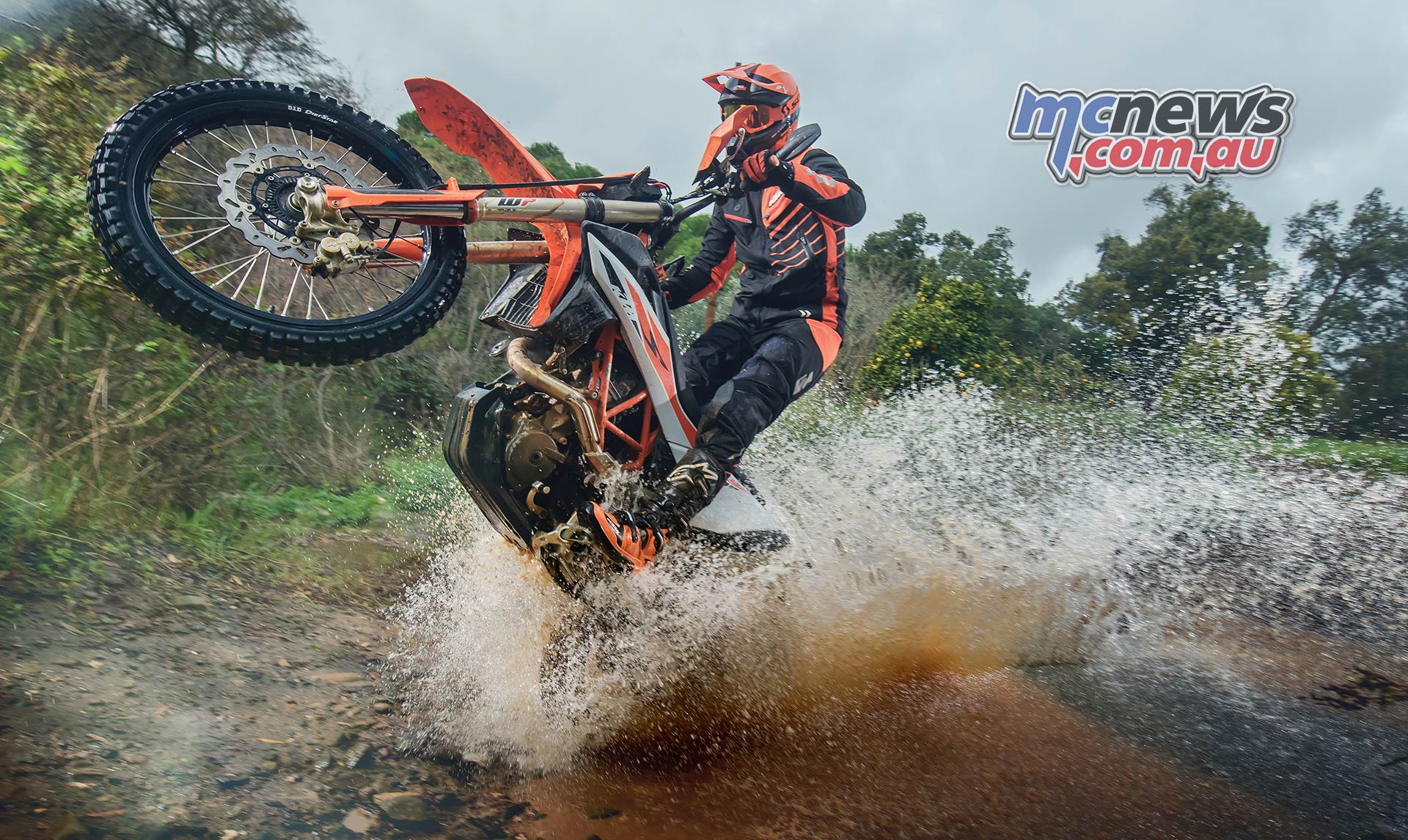
Anyway, back to the new KTM.
This new generation of the LC4 engine is un-fussed while cruising, even well above the 110 km/h highway speed limit. In fact, you can drop it back a couple of cogs and stand it on the rear wheel to amuse yourself from those speeds if you like, yes it really is that powerful. And thanks to an innovative dual counter-balancer system there is no big slug chug.
In fact, the engine is a masterpiece
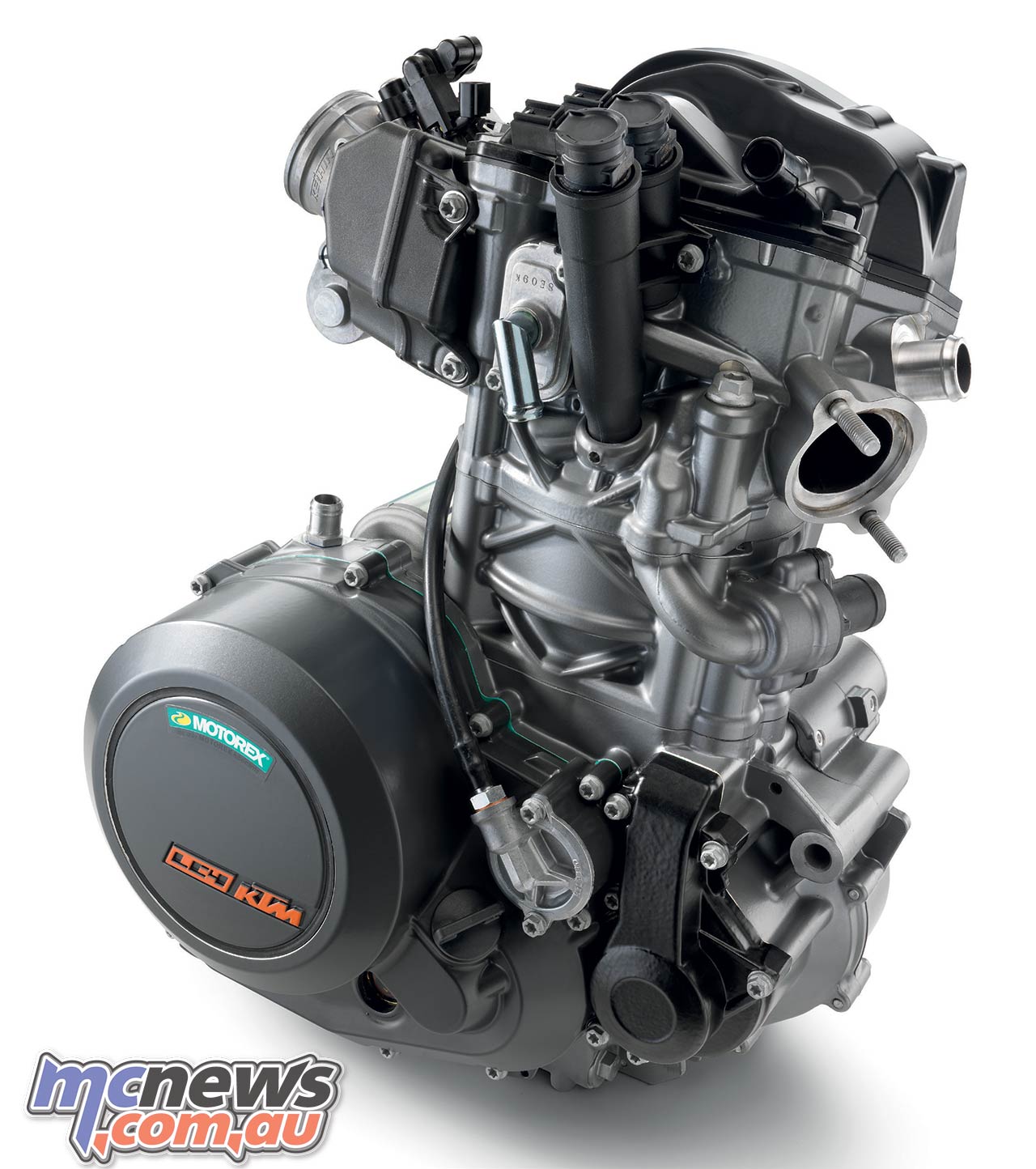
74 horsepower and 74 Nm of torque from a 693cc single has always been possible. But to make those sort of numbers via a carbureted bike you would have a hand grenade that chain snatched like all buggery, only worked above 6000rpm, and would have been such a ferocious beast that it left you in a manic state sucking your thumb in the corner of the garage at the end of every ride. This latest generation 690 makes those big power numbers in an unstressed fashion, and requires no air-box cutting or modifications to unleash serious pull. It bangs hard right out of the box.
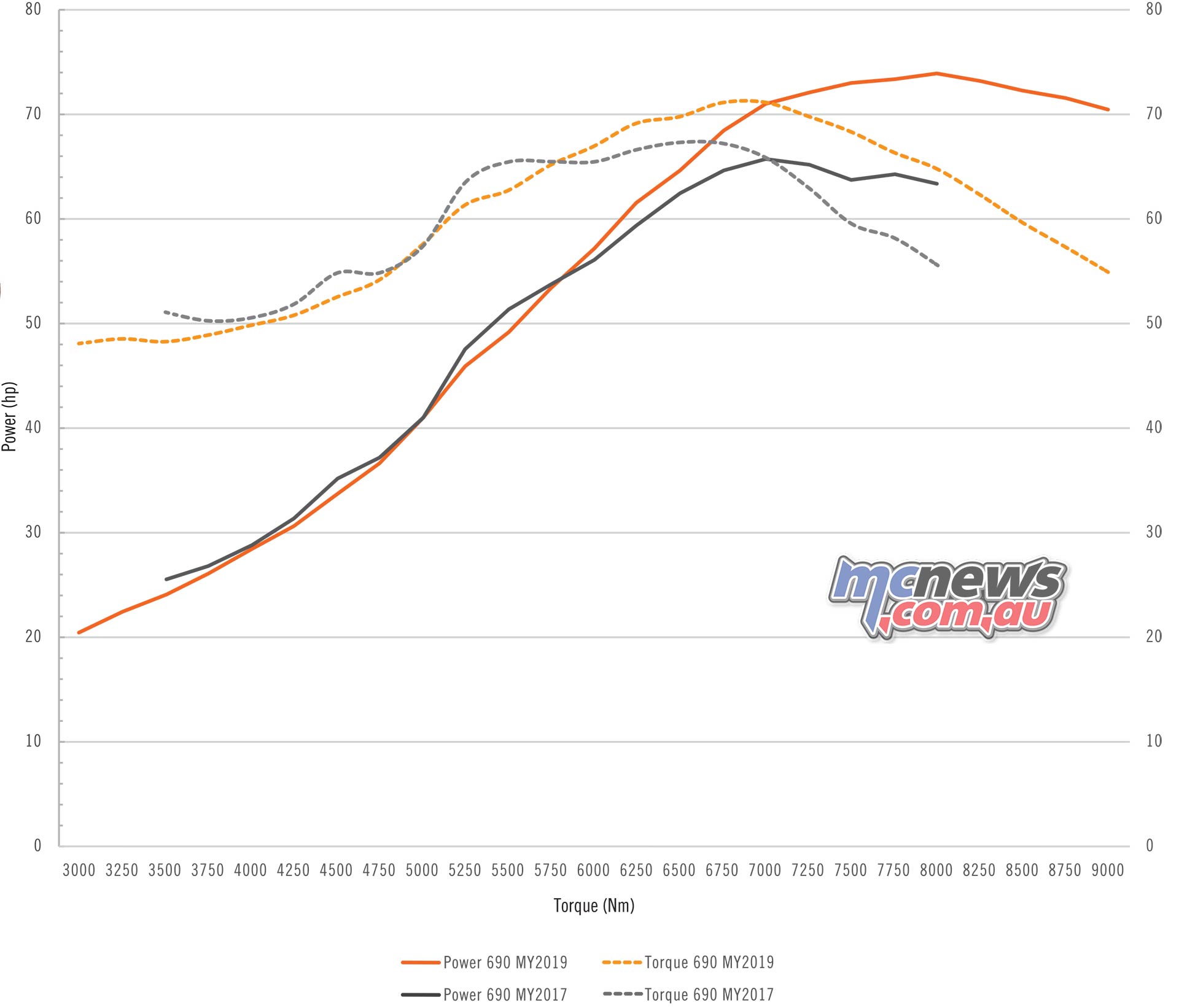
This is not some incremental gain on what we have seen before. No matter what the dyno charts show, the 690 Enduro R heralds a new realm of performance for big singles when it comes to the overall riding experience. The numbers and the power are impressive, but thanks to those twin balancers, a cutting edge engine management system and a ride-by-wire throttle, it is also buttery smooth and unthreatening. It packs some serious grunt while remaining fuel-efficient, easy to ride and clearly sets a new benchmark for big singles. Arnie level muscle dressed in a fine Armani suit.
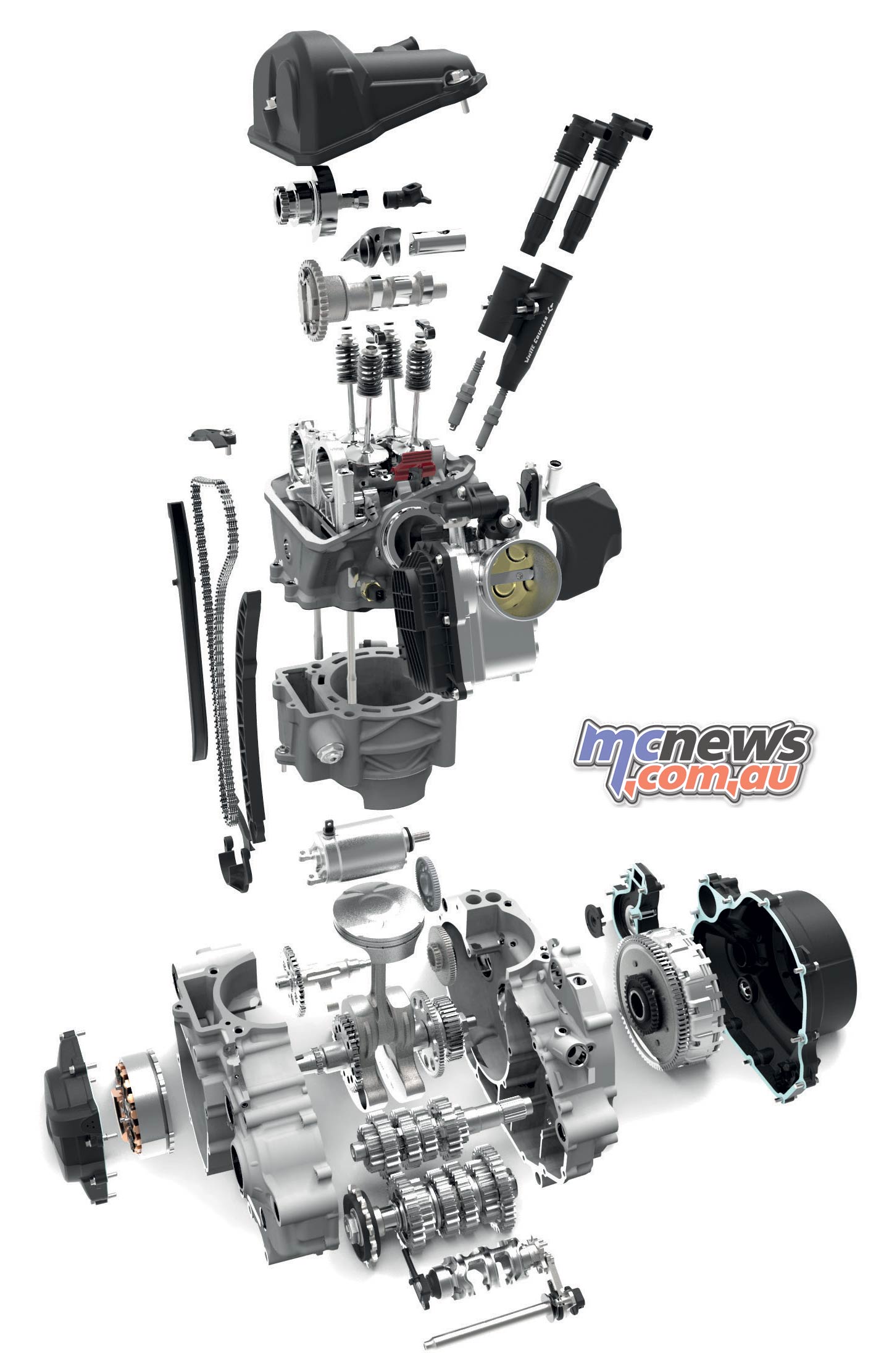
Grip is easy to find. Even on TKC80 rubber the flawless pick-up from a closed throttle sees the engine management system smooth those big pulses of power out well enough to find traction. They are still Clydesdale sized horses hitting that 18-inch rear tyre, but these brumbies are wearing ballet shoes on their hoofs and somehow manage to tread lightly, while still slingshotting you towards the next corner at a prodigious rate of knots.
The standard gearing is very l-o-n-g, but the bike has no trouble pulling it. Negotiating city 50km/h zones will require a shift down to fourth in order to keep the bike happy, but above that it is simply pick a gear, any gear will do.
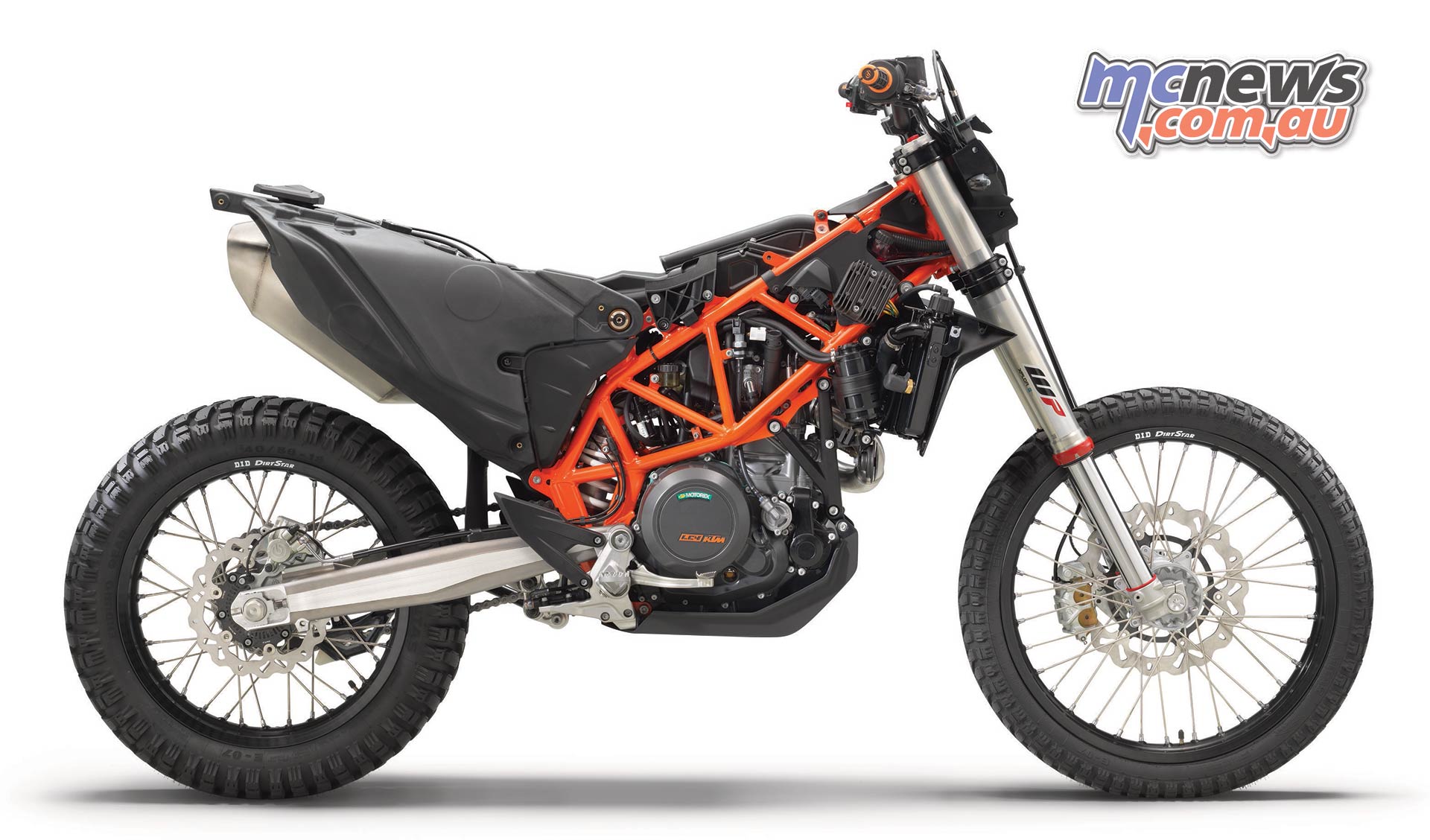
The bike is fitted with a high-end quick-shifter that works on both up and downshifts, and is programmed to also operate well at part throttle openings. Unlike the old tech systems that only really worked with the throttle tapped, it can be used even when dawdling about. I was busy running on auto-pilot most of the time and thus often forgot the bike had it, which probably was part of the reason that I missed a few shifts. More time on the bike would see me adapt further and most likely render the shifting a non-issue, like most KTM machines though, the shift action is never quite as rifle-bolt positive as I would like.

The clutch is beautiful. How can a clutch be beautiful you say? Those of you that have spent time negotiating tight terrain in the bush on a powerful Japanese dirt-squirter that has no hydraulic clutch will know exactly what I mean. The pleasure on your fingertips is palpable when working a nice clutch in the dirt. The 690 Enduro R not only has a slip-assist style clutch mechanism, but also a Magura hydraulic lever set-up. It’s clutch porn, my eyes glaze over a little Homer Simpson thinking about doughnuts style as I write about it… Yeah I’m a bit different, but I am okay with that…
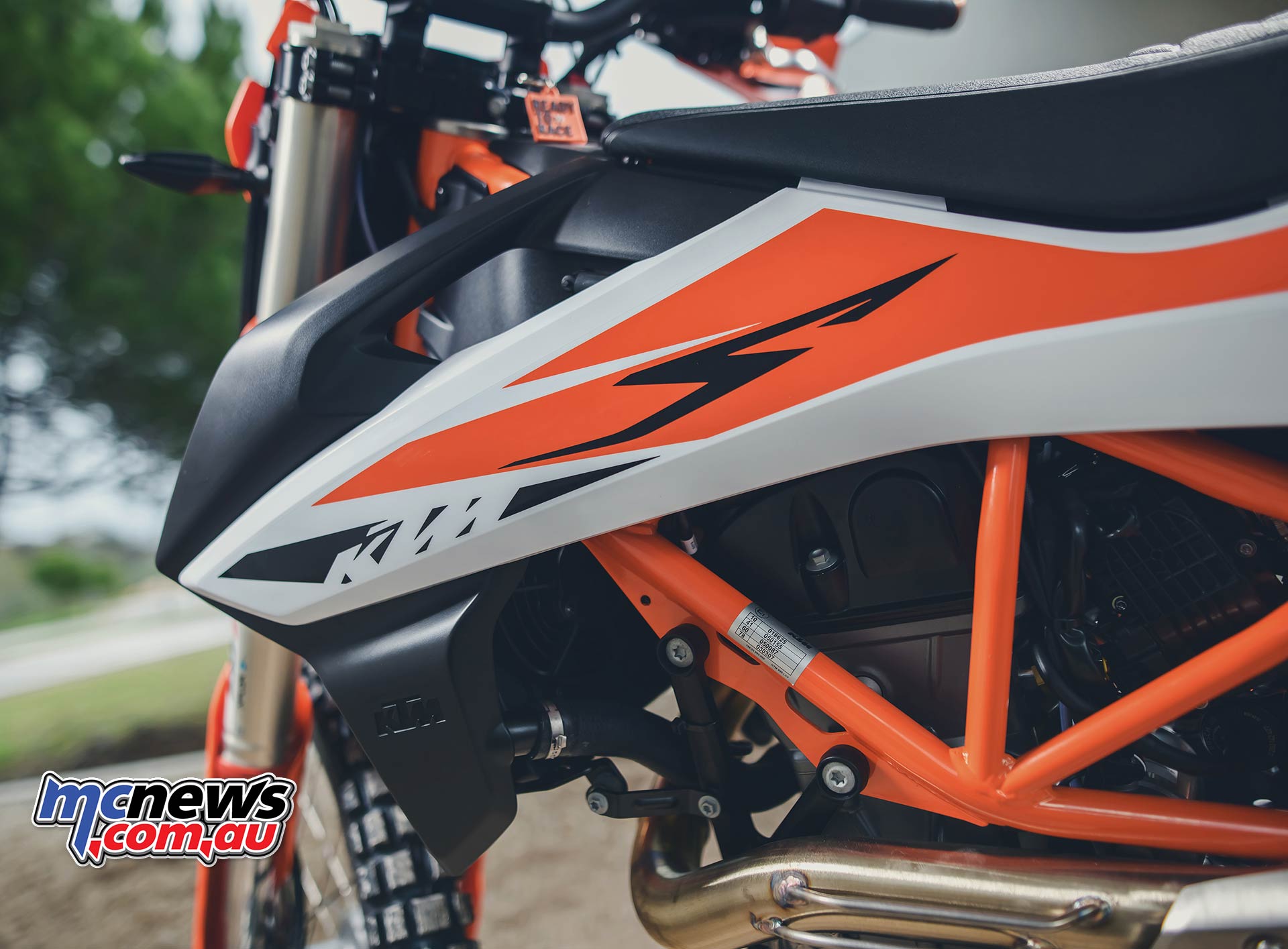
The map change and traction control switchgear on the left bar was a little problematic during my time on the bike and only worked if pressed in a very specific part of the button. Annoying.

Unsurprisingly, KTM subsidiary WP provide the suspension. The WP XPLOR 48 kit is at the upper end of the WP range with 48mm inverted open cartridge forks and a beefy looking shock working through a Pro-Lever linkage. Both ends offer a generous 250mm of well damped travel and endow the bike with 270mm of ground clearance.

Riders in our bunch varied in size massively, I was at the upper end of the scale, while an impossibly slim older Italian tester would have struggled to see the suspension register any sag under what must have been a size zero KTM adventure suit. Yet, none of us were eager to start twiddling clickers, we were too busy riding as hard as we dared on the varied trails that dot the ranges behind the Algarve coast of southern Portugal to worry about that stuff. I was amongst a handy group of riders and we were all having a ball with little to complain about. No squeaks or bangs were to be heard and the whole show just felt, well, competent, and very much fit for purpose.
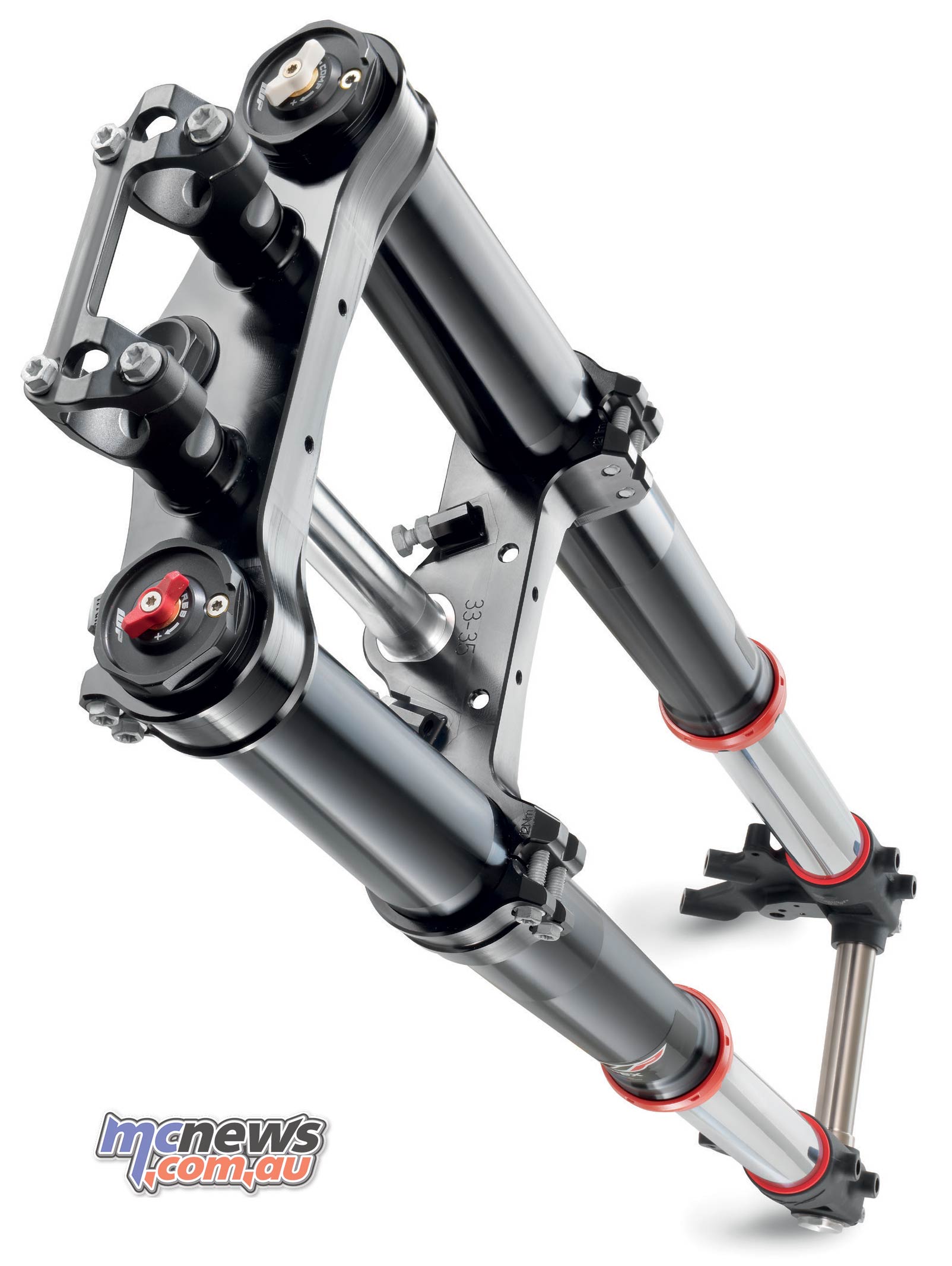
Clearly the smooth electronically controlled power delivery plays a big part in this equation, with no sudden hits of power to upset the springs. Suspension fettlers still have no end of options to tune themselves to a standstill with pre-load, along with both high/low speed compression and rebound damping all ready to be fettled.
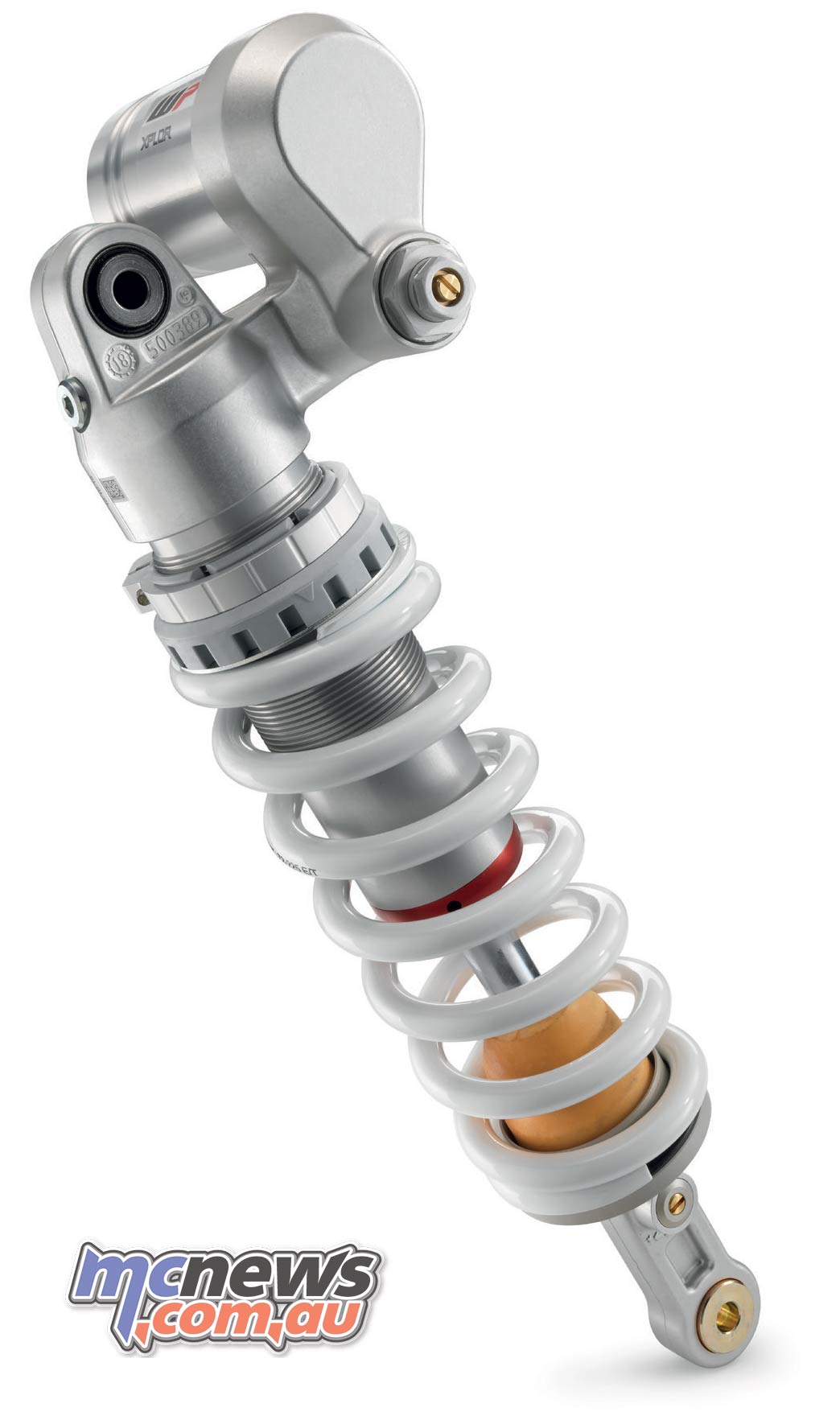
Braking is another area where KTM have not skimped. Brembo hardware front and rear is backed up by an almost superbike spec’ lean angle sensitive ABS system that sports a very well tuned off-road mode. Decent feel is evident from both ends and the ABS system is unobtrusive enough to leave on at all times, with the rear deactivated for the dirt. At 300 mm the front disc and twin-piston caliper is also up to being pressed on the street. The 240 mm rear disc seems perhaps a little small, but worked flawlessly with great bite and control.
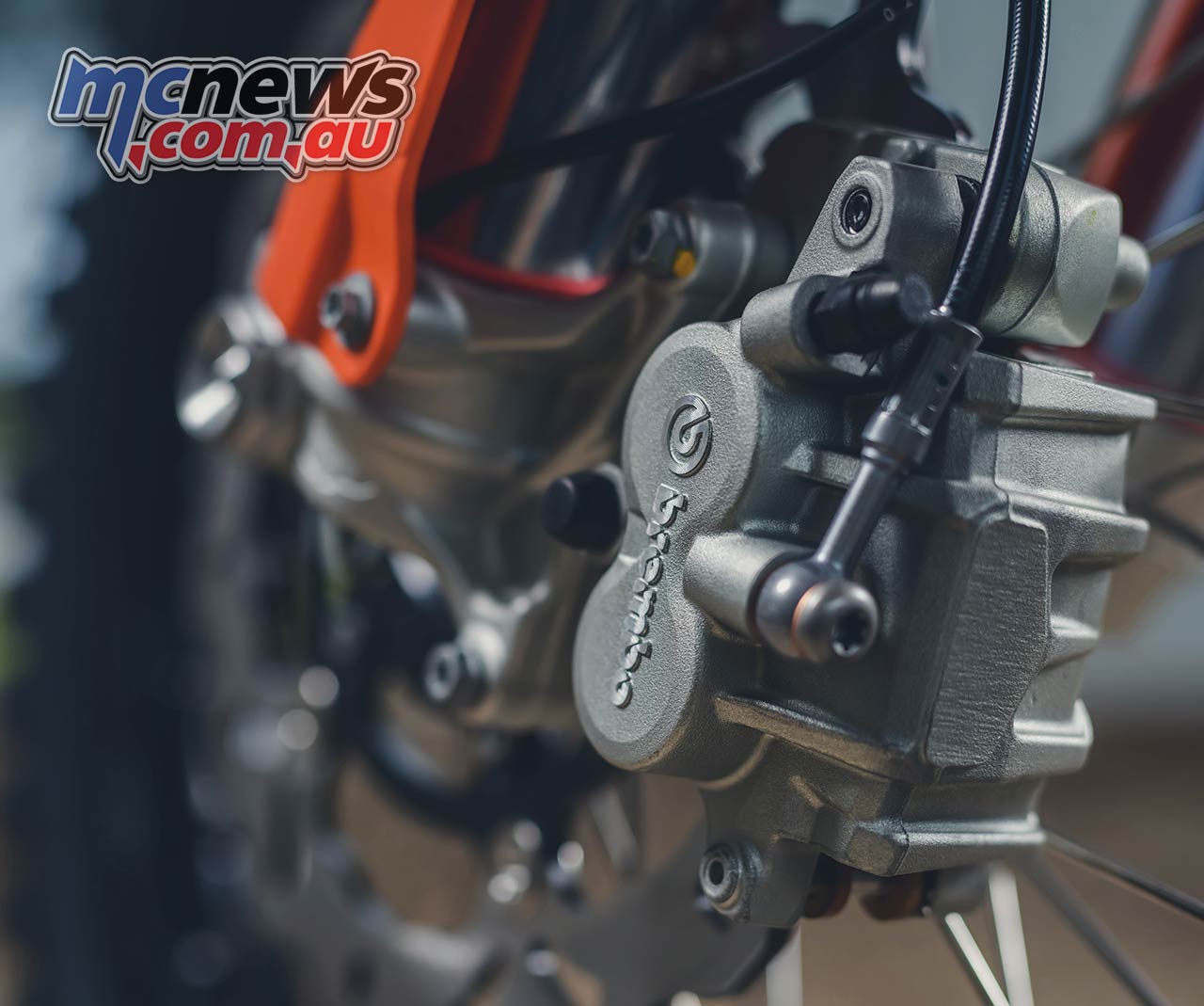
The only time I felt the brakes go away from me as the electronics intervened was when I had basically cocked it up and got in way too hot. You could feel the front run on ever so briefly before the electronics allowed the hydraulic pressure to again be applied smoothly and modulate the caliper pistons to slow the machine. No old school pulsing through the lever that made you shit your pants and feel as though you have no control. The intervention is applied and cycled so quickly that sometimes you can fail to register that any intervention has actually happened. The system releases the braking pressure instantly, and then reapplies it so smoothly that there might be one scenario in a hundred that you might be able to better it, if on your A game, but in a surprise emergency stop scenario you are not going to better it.
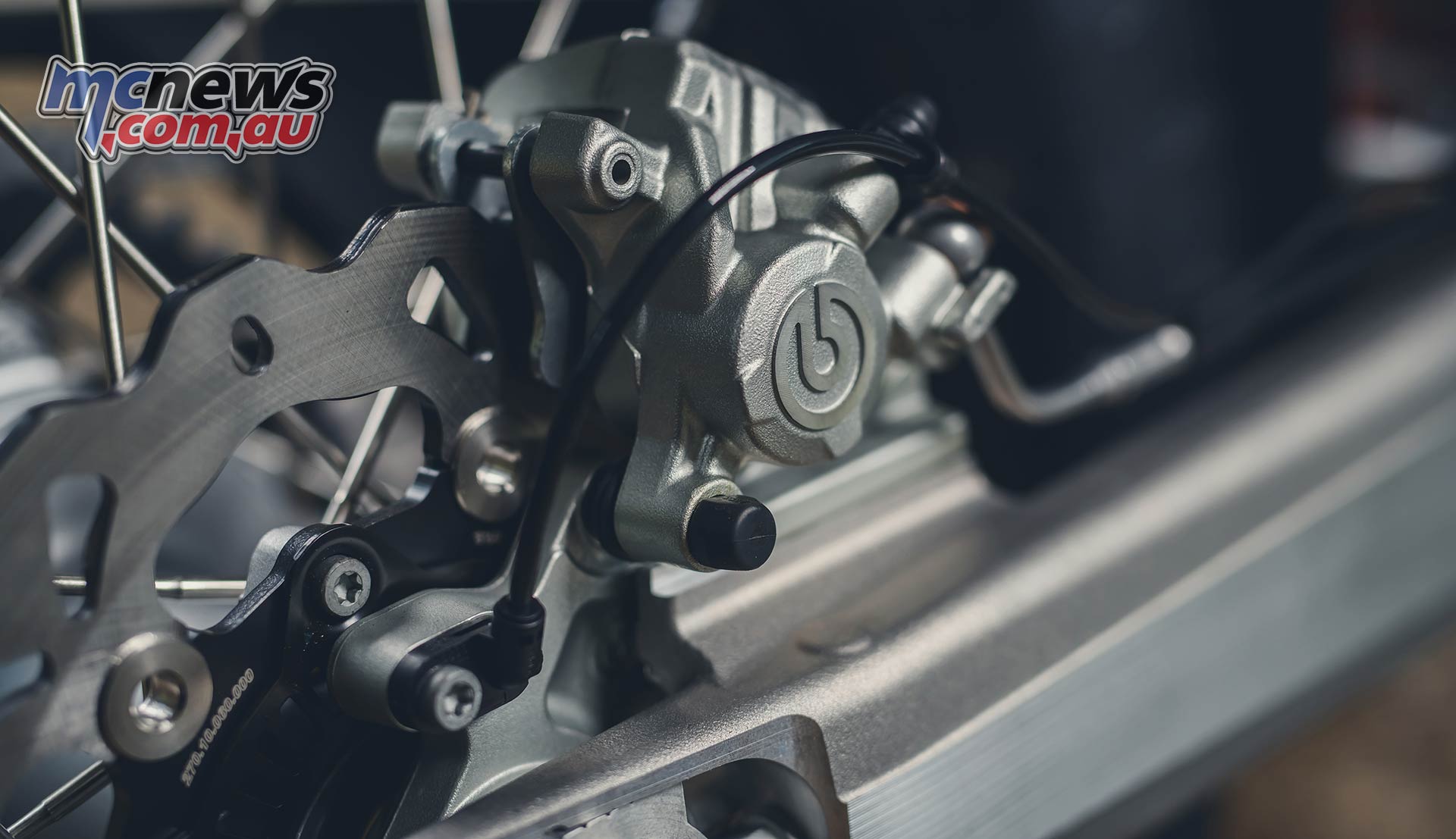
The KTM 690 Enduro R is a case study in just how good electronic systems now are, and the fact that they are now found on a single-cylinder dirtbike is simply astounding. Not only do we have a best of the best lean-angle sensitive ABS, but also a highly sophisticated traction control system. This is not some basic set-up that simply retards the ignition, as seen on the latest EXC range of KTM enduro bikes, but is instead a true sportsbike level of smarts.
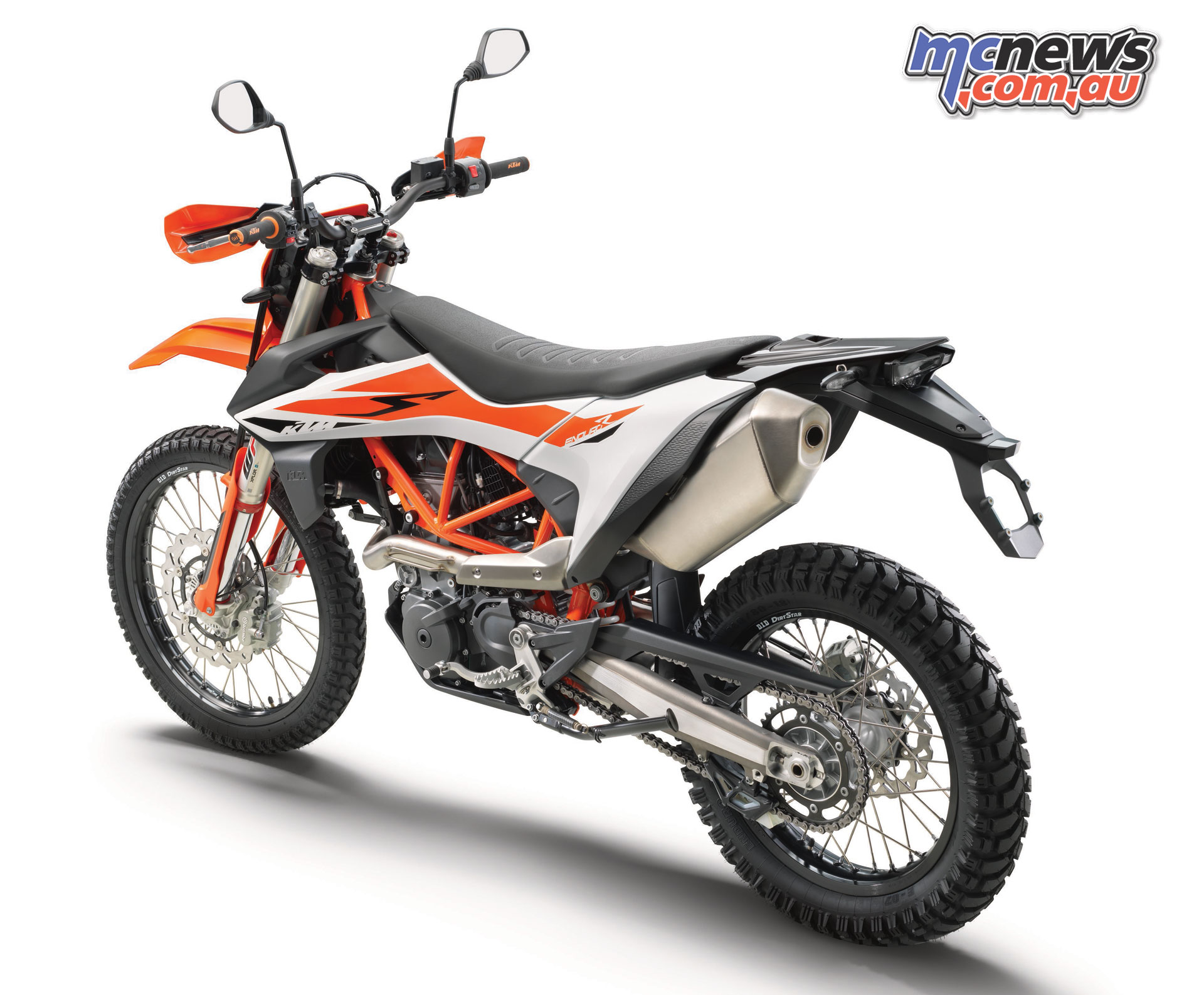
In the off-road modes the traction control system is extremely liberal and its intervention almost imperceptible as you slide from corner to corner, it is only when things get a bit too crazy that it reigns things in a little. And the way it then does intervene is sublime, it just pulls enough power, almost imperceptibly, that it never really interrupts drive, instead it just reduces power via the throttle butterflies in order to drive forward momentum, instead of sideways motion. Don’t for one minute think that means that in order to be drifting in and then sliding out with the front wheel pawing for the sky you need the traction control system turned off, you don’t. You are getting pretty loose before it starts to intervene. The lean angle component of the traction control system is not used in off-road mode, so you have full power to blast out of a berm when needed.

Of course, if you are fresh in the morning and want to go all out and attack your favourite trail, by all means turn the electronic smarts off and fly by the seat of your pants. But even then, when you are spent later in the day and just want to get to your digs for the night, there is some comfort in being able to reactivate the smarts and just cruise to your destination while conserving energy, and brain power.
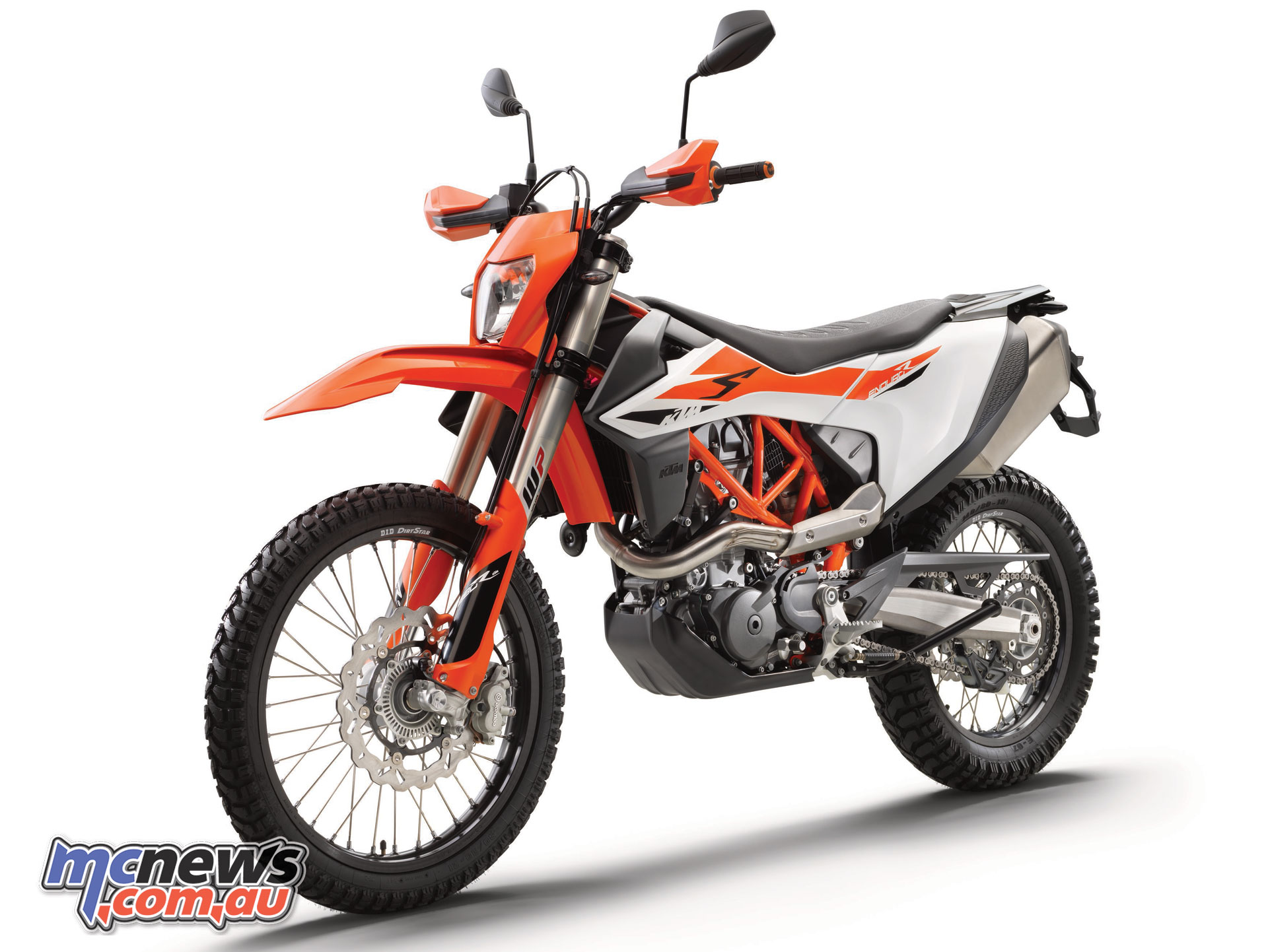
The 13.5-litre fuel cell effectively does three jobs in one as it also forms a structural part of the sub-frame, and also serves as the inner rear mudguard. KTM engineers claim a potential range of 300 km, and while that figure will no doubt make many scoff, I actually believe that might be possible. It is a very modern engine with the latest electronic smarts and 4.5 litres per 100 km should be feasible when off-road touring. Certainly, I would expect to be able to bank on a safe range of over 250 km in most riding scenarios. Even the most manic of tyre frying runs would surely still see a range of well over 200 kilometres. Seriously, it is incredible just how economical the latest generation of EFI bikes are.
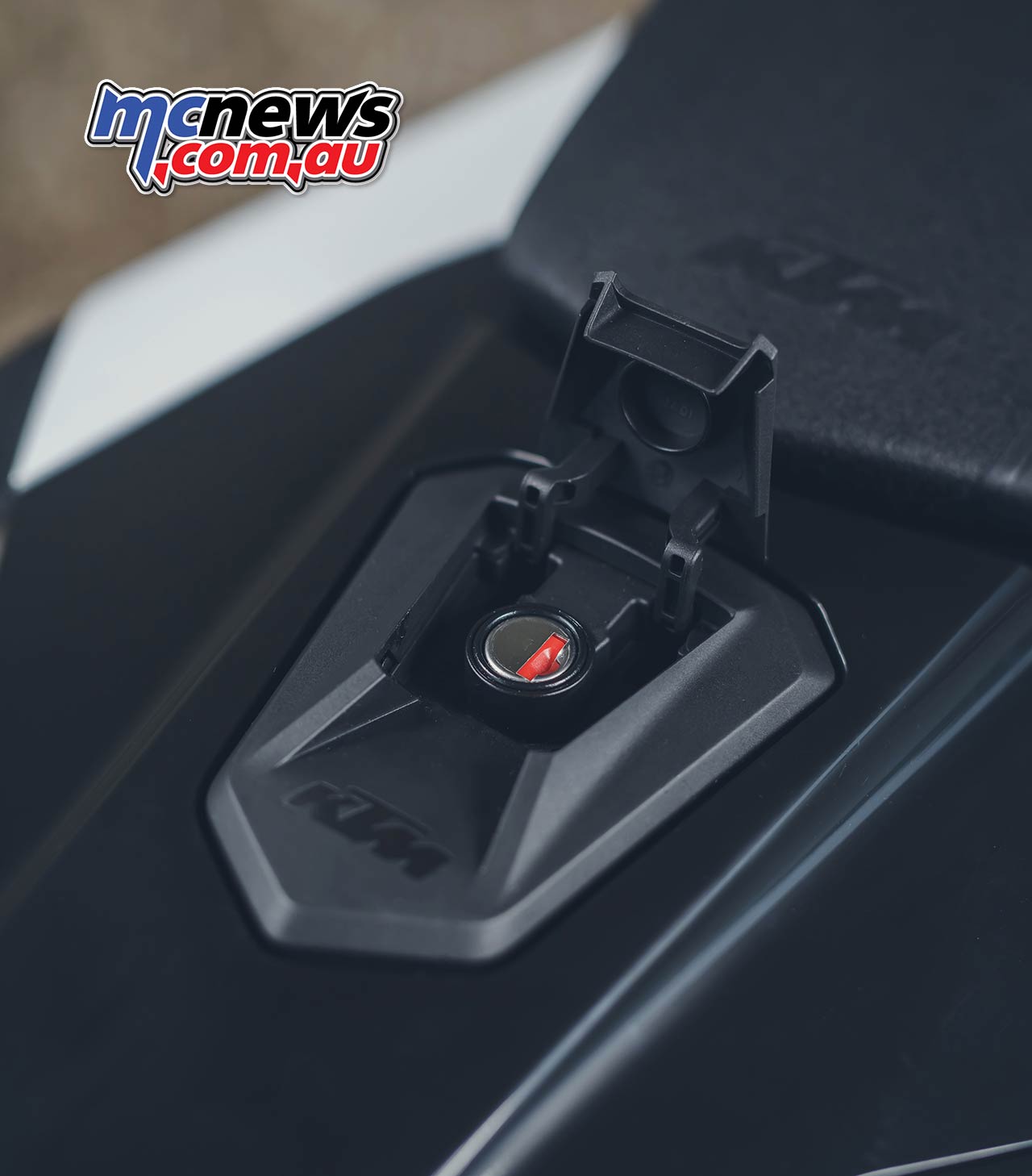
The fuel filler is accessed behind the seat at the rear of the bike, on top of the rear fender. This means that the optional 18-litre front bag accessory that fixes between the front of the seat and the headstock doesn’t need to be disturbed when refuelling. However, there are limited options for securing any luggage to the rear of the bike, with no handy tie-down points or structural members to fix any sort of luggage too.
I did see some of the KTM staff with a small, perhaps five, or ten-litre when expanded, soft luggage bag strapped on top of the rear fender. These had a strap wrapped around the seat, but the dearth of sturdy tie-down points for luggage is perhaps the most significant drawback of the motorcycle. KTM would say, well just buy the new 790 Adventure if you want luggage grids and the like for long-distance touring. In response I would say, the engine in this bike is so good why in the hell did you bother making a parallel twin adventure bike at all! Or at least make us a Rally/Adventure version of this 690 Enduro R for those that want the ultimate big single adventure bike!
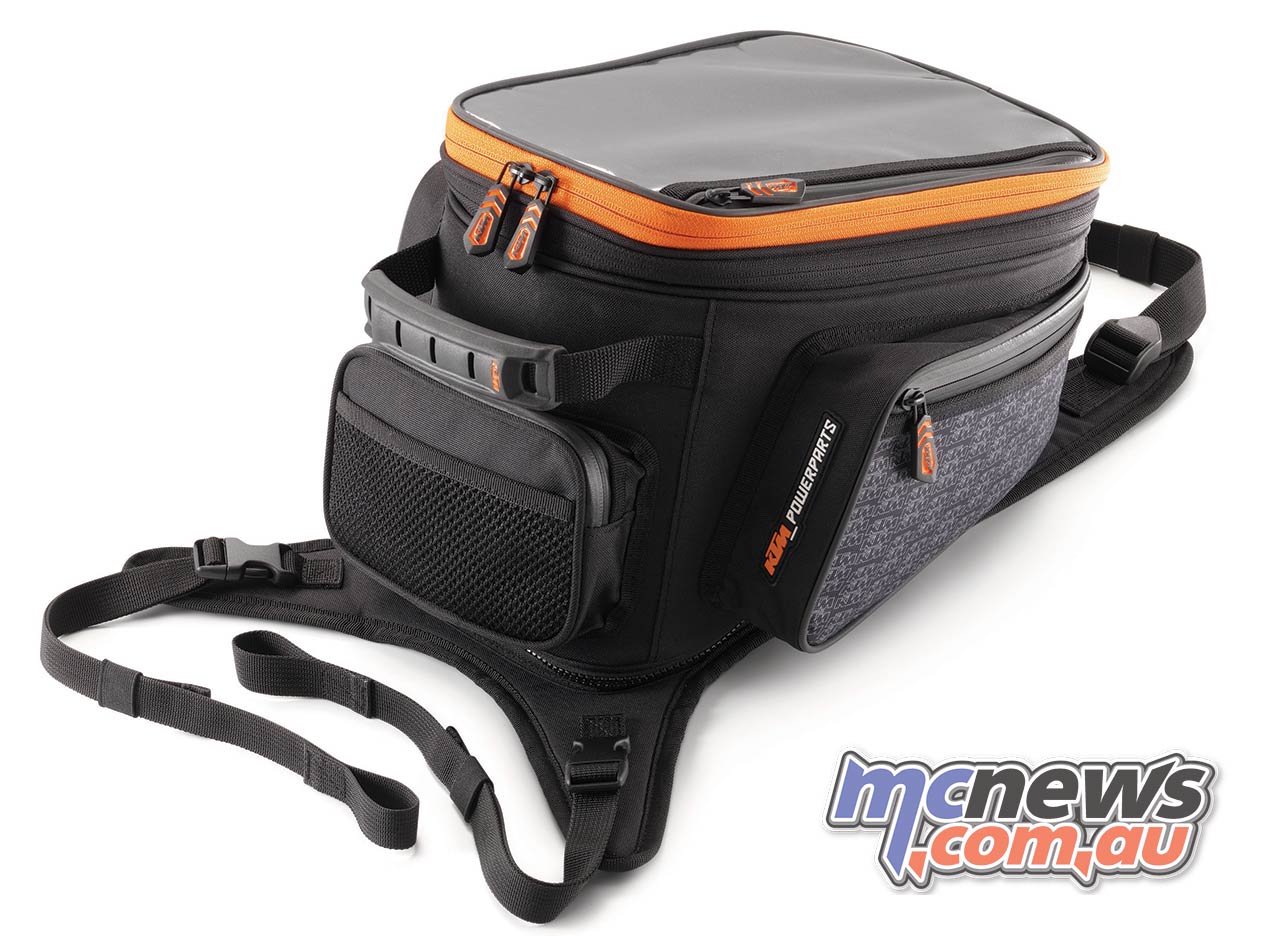
The boundaries of our adventures at home here in Australia are limited in scope only by our imagination. Perhaps this is not impressed enough on the designers at Kiska back in Austria. If the 690 Enduro R was developed with the Australian market front of mind, with Aussie input, no doubt we would have got some viable tie-down points at the rear of the machine for luggage. Tie-down points might not look all that great when designers are working on the crayons, but they do sure come in handy…

KTM has instead left it to the aftermarket to devise a quality set of soft throw-overs to satisfy the demands of those that want to go on longer and more epic hard-core adventures, but don’t want to do it on a 200 kilogram+ multi-cylinder behemoth that, if crashed, will likely cost thousands to fix. There would be no better serious hard-core adventure bike in the market today than the 690 Enduro R, if only you could simply strap a bit more luggage to it, so that camping out and true multi-day epics would be viable options. I am sure owners out there will improvise though and come up with some sturdy luggage solutions.

Curiously, KTM have provided some handy amenities though, a convenient USB port up near the bars, and a brilliant standard toolkit hidden behind its smooth flanks.
The bodywork to reach said toolkit is removable without the need for tools. The air-box is also easily accessed and the air intake situated right up beneath the front part of the seat.

My luggage complaints aside, as a big single day long-distance off-road blaster there is probably no better machine than the 690 Enduro R. Of course, it is not a 500 EXC-F in the tight stuff, but the 690 requires only 10,000km basic service intervals, rather than an oil and filter change every 15 hours, and full engine rebuild every 135 hours that the more enduro competition focussed 250/350/450/500 EXC-F singles advise under their recommended maintenance schedule.
The 690 Enduro R is 35kg heavier than those more race-bred options, but on open trails it still proves light enough, and the suspension responsive enough, to very rarely ever feel as though you are being held back by the weight of the machine. The slim flanks and excellent ergonomics of the 690 Enduro R also help hide that weight, it feels a like a proper dirtbike, ready to take on anything you point it at. The lump of human on top of it, as always, is the final deciding factor in the outright performance limitations.
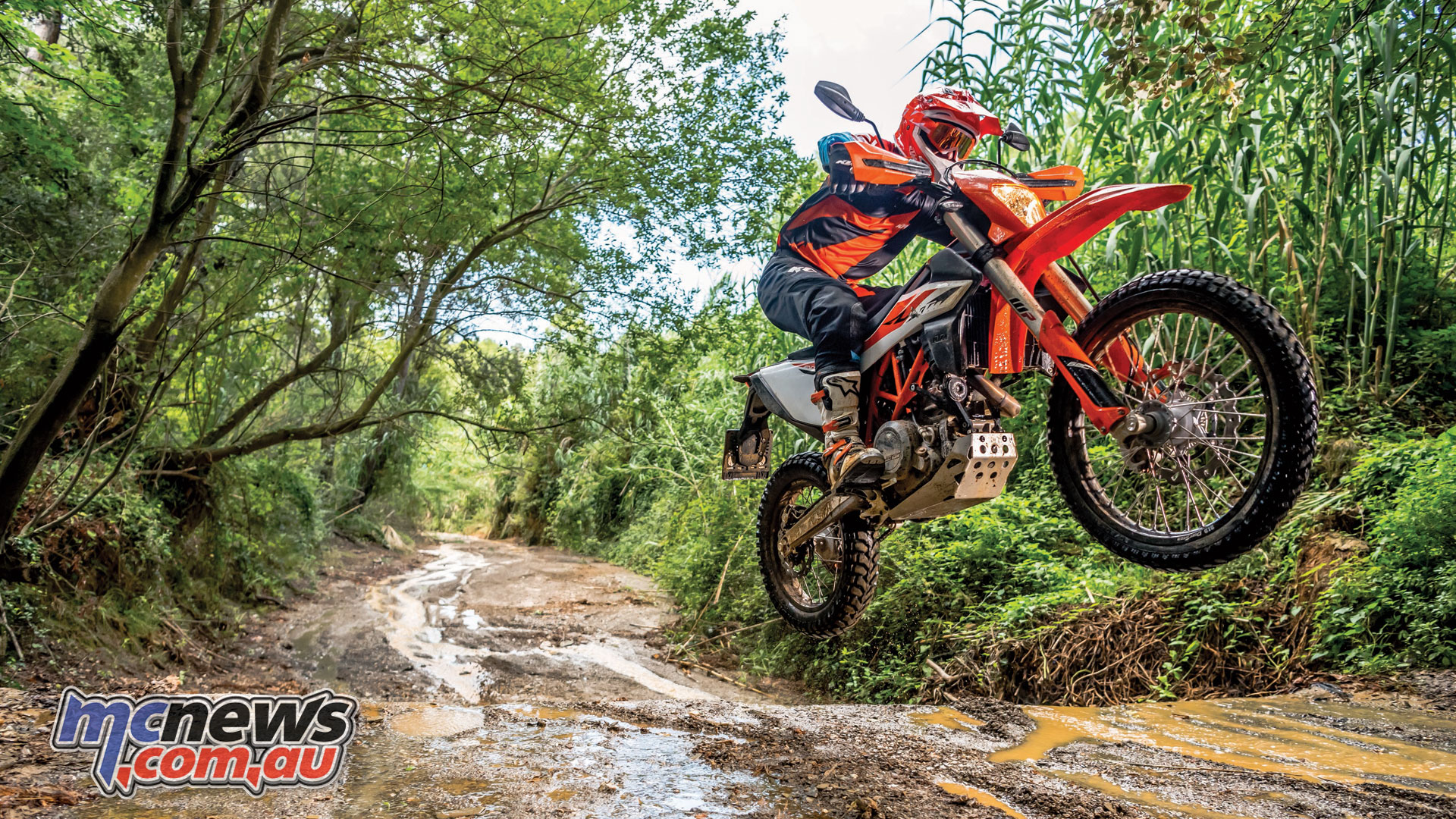
When the pricing of the 690 Enduro R is compared to that of the 500 EXC-F, I would suggest that the 690 Enduro R seems like better bang for the buck than its smaller and more hard-core siblings. A 500 EXC-F is $14,695, or $16,195 for the Six Days model, but by the time you register it and pay stamp duty etc. you are getting up towards the $17,595 Ride Away price of the 690 Enduro R.
When the comprehensive two-year unlimited kilometre warranty of the 690 Enduro R is factored into the equation, then you can really start to see the relative value of the 690. The more competition focussed EXC-F machines only come with a six-month parts and labour warranty.
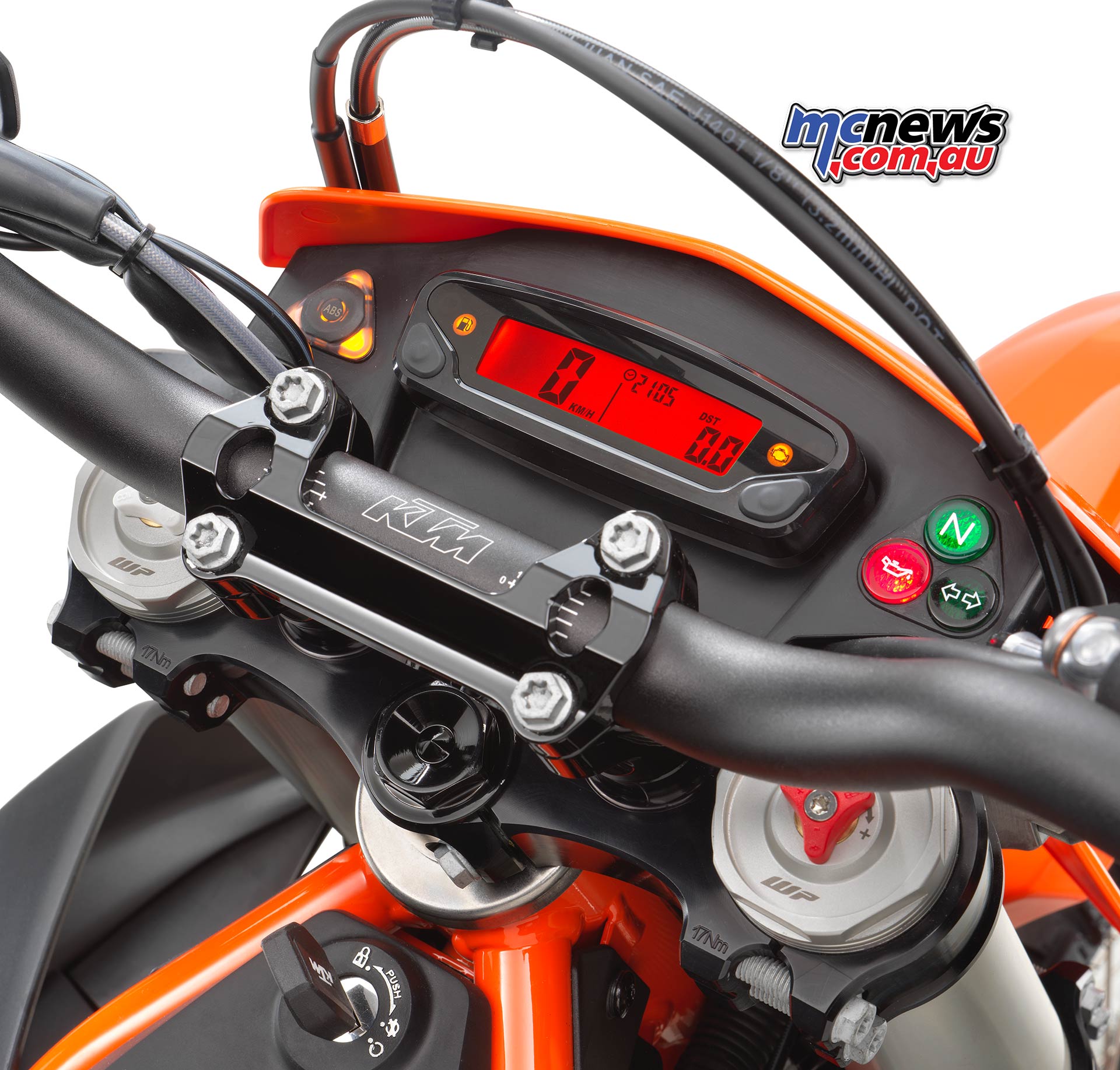
The fact that you also need a key to start the 690, the fuel cap can be locked, and that the steering can also be locked easily from the ignition, helps add a little peace of mind should you need to park the machine anywhere public. These are very welcome features out in the real world.
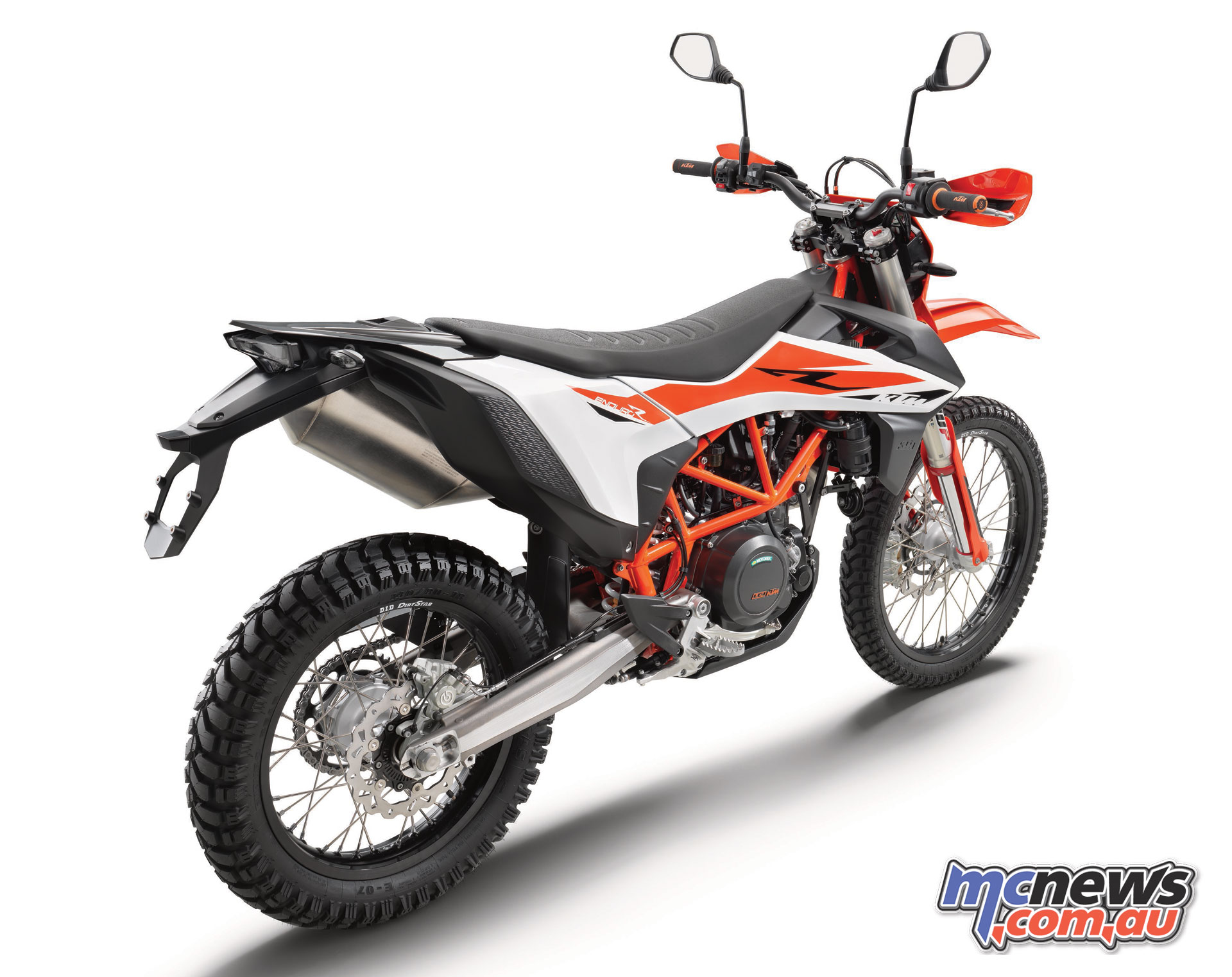
For those that like spending lots of time on the trail, and often, the long service intervals and much longer fuel range of the 690 Enduro R, along with a relatively comfortable seat, and niceties such as the standard cooling fan (an optional extra on EXC-F), sees the 690 Enduro R certainly start to make a lot of sense. Especially if your adventures entail any lengthy tarmac sections, as the 690 Enduro R will eat up the kilometres much more easily, and comfortably, than the more enduro competition focused machines. Not quite as Ready To Race, but certainly more than Ready To Rumble.
It is a high-performance trail bike, a capable street bike for commuting, and a viable adventure motorcycle all rolled into one. Can less sometimes be more…?
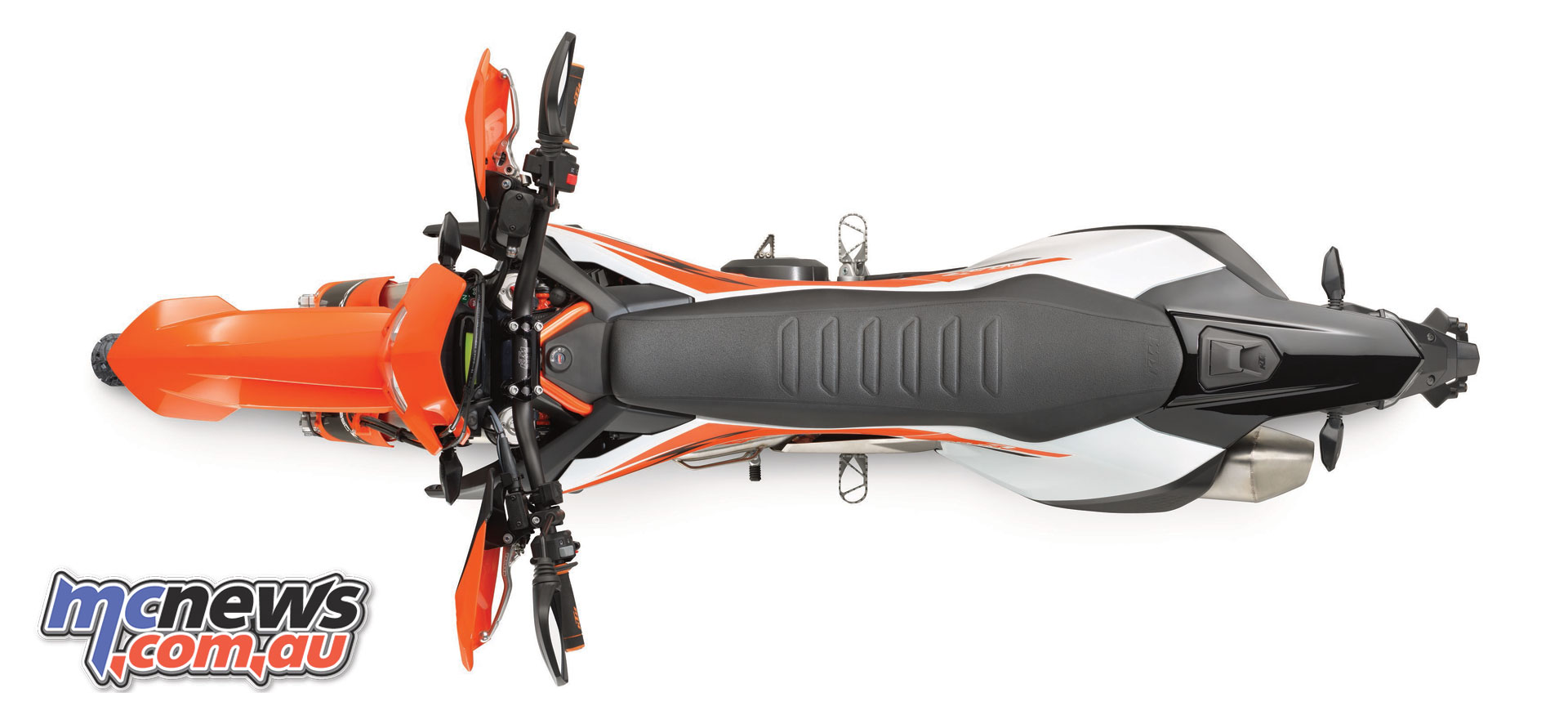
| 2019 KTM 690 ENDURO R | |
| Engine | |
| Engine Type | Single cylinder, 4-stroke |
| Displacement | 690 cc |
| Bore / Stroke | 105 / 80 mm |
| Power | 55 kW (74 hp) @ 8,000 rpm |
| Torque | 73,5 Nm @ 6,500 rpm |
| Compression Ratio | 12.7:1 |
| Starter / Battery | Electric / 12V 8.6Ah |
| Transmission | 6 gears |
| Fuel System | Keihin EFI (throttle body 50 mm) |
| Control | 4 V / OHC |
| Lubrication | Pressure lubrication with 2 oil pumps |
| Engine Oil | Motorex, Power Synth SAE 10W-50 |
| Primary Drive | 36:79 |
| Final Drive | 15:46 |
| Cooling | Liquid cooling |
| Clutch | PASC™ slipper clutch, hydraulically operated |
| ECM / Ignition | Keihin EMS with RBW, double ignition |
| Traction Control | MTC (2-mode, disengageable) |
| Chassis | |
| Frame | Chromium-Molybdenum-Steel trellis frame, powder coated |
| Subframe | Self-supporting plastic tank |
| Handlebar | Aluminum, tapered, Ø 28 / 22 mm |
| Front Suspension | WP-USD Ø 48 mm |
| Rear Suspension | WP shock absorber with Pro-Lever linkage |
| Suspension Travel F / R | 250 / 250 mm |
| Front Brake | Brembo 2 piston floating caliper, brake disc Ø 300mm |
| Rear Brake | Brembo single piston floating caliper, brake disc Ø 240 mm |
| ABS | Bosch 9.1 MP (cornering ABS and offroad mode, disenengageable) |
| Wheels Front / Rear | Spoked wheels with aluminum rims, 1.85 × 21″; 2.50 × 18″ |
| Tires Front / Rear | 90/90-21″; 140/80-18″ |
| Chain | X-Ring 5/8 × 1/4″ |
| Silencer | Stainless steel silencer |
| Steering Head Angle | 62.3° |
| Trail | 117.3 mm |
| Wheelbase | 1,502 mm |
| Ground Clearance | 270 mm |
| Seat Height | 910 mm |
| Fuel Tank Capacity | approx. 13.5 liters |
| Dry Weight | 146 kg |
| Weight (Ready To Ride) | 149 kg |
| Weight (Fully Fueled) | 159.4 kg |
| Price | $17,595 Ride Away (Arrives April, 2019) |
| Warranty | Two years, unlimited kilometres |
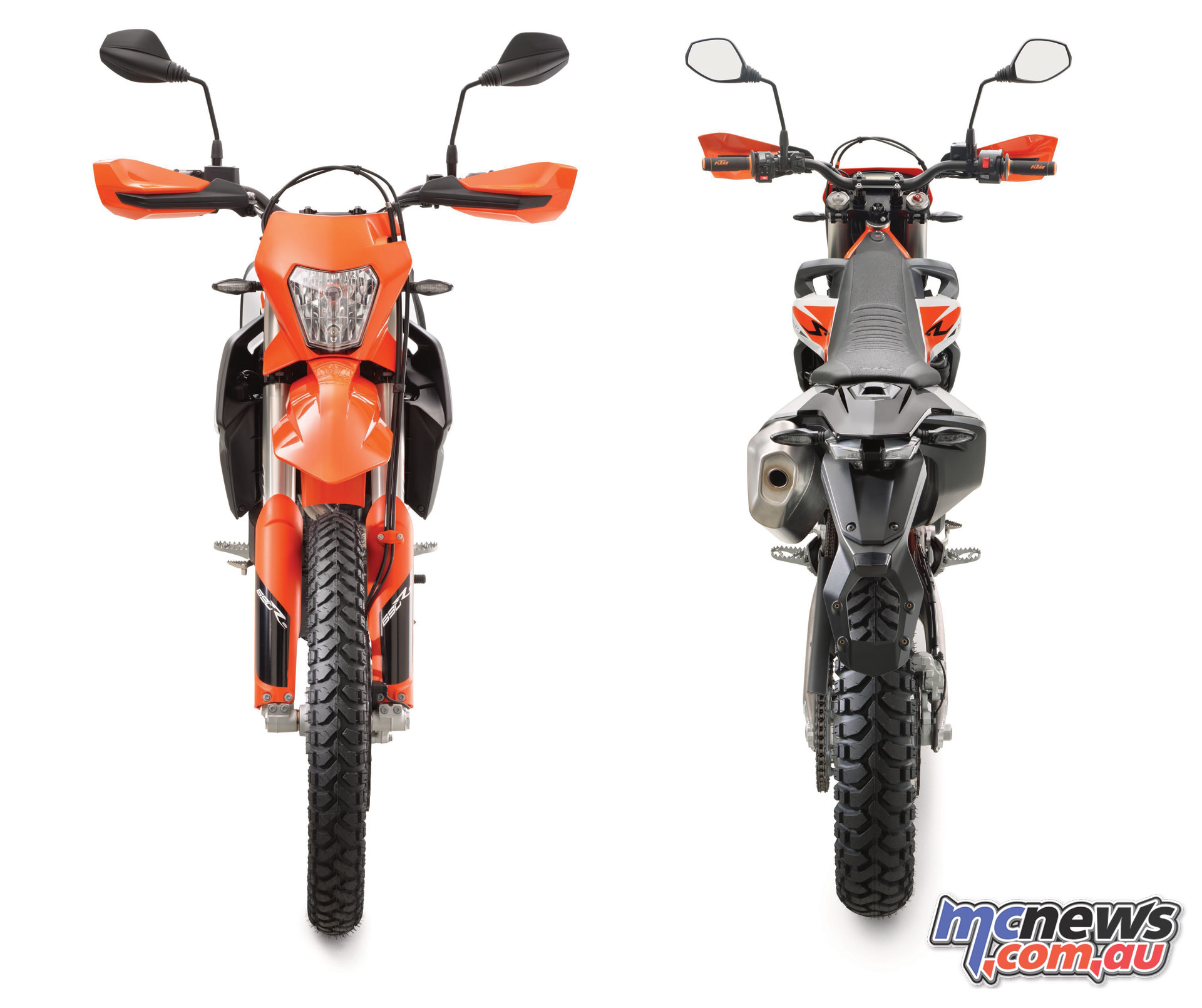
Footnote: The current Husqvarna 701 model already has the twin counter-balanced engine, but we believe the 2019 KTM has an updated engine management system and more sophisticated electronic smarts (lean angle traction control and ABS), in comparison to the Husky. When questioned as to the actual specific differences, KTM personnel at the launch claimed to have little knowledge of the Husqvarna specifications, or the actual differences between the two. Thus it is hard for us to 100 per cent quantify what exactly the differences are, as we have not sampled the current 701.























